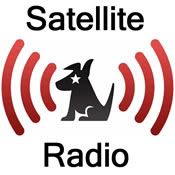 Before we describe our strategies for supporting applications within the DBS system, it is important to gain a better understanding of the kinds of applications that are suited to broadcast-based information dissemination. Consider the following applications scenarios, which illustrate some of the possibilities inherent in the DBS system:
Before we describe our strategies for supporting applications within the DBS system, it is important to gain a better understanding of the kinds of applications that are suited to broadcast-based information dissemination. Consider the following applications scenarios, which illustrate some of the possibilities inherent in the DBS system:- Rapid information Dissemination: A major forest fire is burning out of control in a National Park. Firefighters are being brought in from several adjacent states, and they are not familiar with the disaster area.
Detailed forest service maps are needed to help them plan their disaster response, but there are needed to help them plan their disaster response, but there are not enough to go around. A DBS dish is rapidly installed in the disaster management command center, a complete set of digital maps are quickly downloaded over the DBS broadcast channel.
Depending on where the individual teams are to be sent, selected maps are further distributed to mobile computers (perhaps over a WLAN in the command center) or computers embedded in support vehicles (perhaps via a campus-area packet relay network that spans the depot around the command center) that are then taken into the field by the firefighter teams.
- Integrated Broadcast Video and Interactive Data Services: Rural health centers around the country are equipped with DBS dishes. A "medical practitioners channel" is established to transmit DirectTV broadcasts of the latest medical procedures.
During these broadcasts, a viewing physician can use the system's data communications capabilities to interactively select from a collection of medical journal articles that describe the procedure or treatment currently on view be downloaded into his or her personal computer.
- Information on Demand: Up-to-the-minute weather reports are captured for the entire country and fed into a DBS "digital weather channel." For major metropolitan areas (or areas in which the weather is changing rapidly or is particularly severe), these reports are frequently scheduled.
Source: http://bnrg.eecs.berkeley.edu
No comments:
Post a Comment